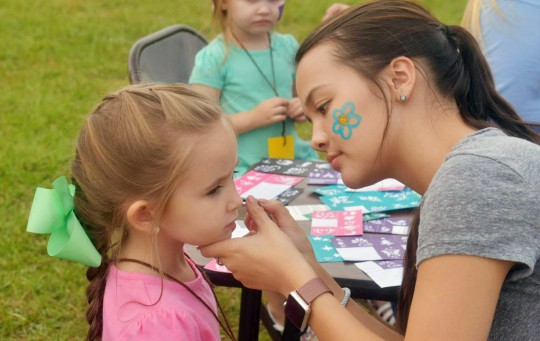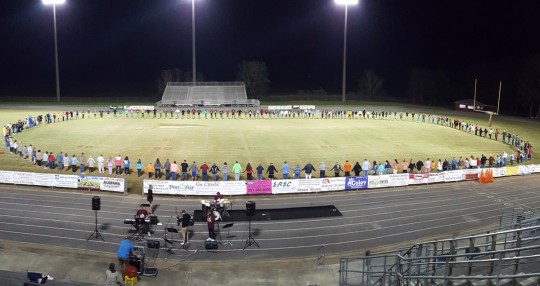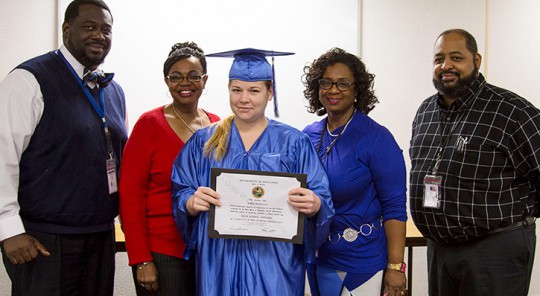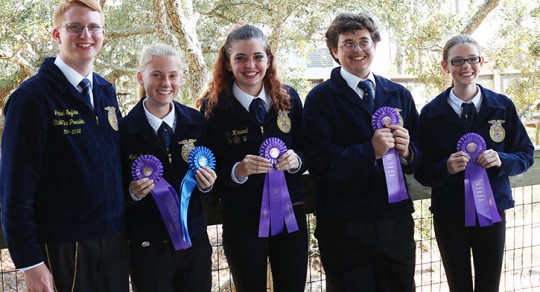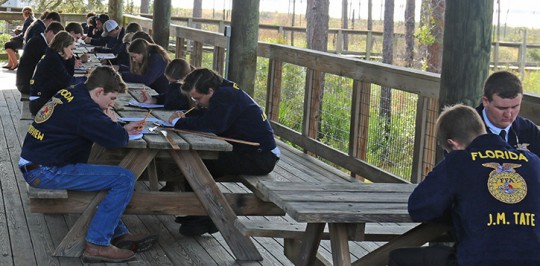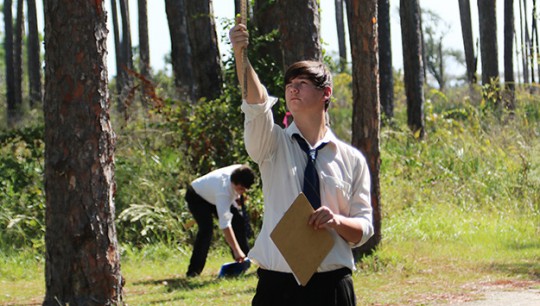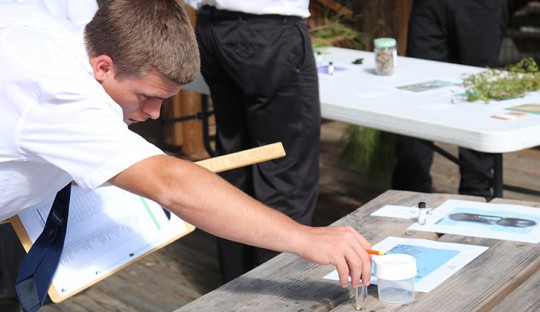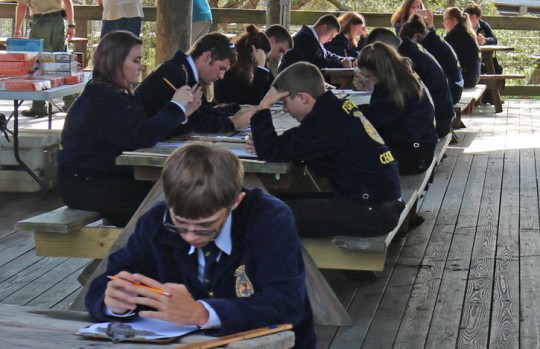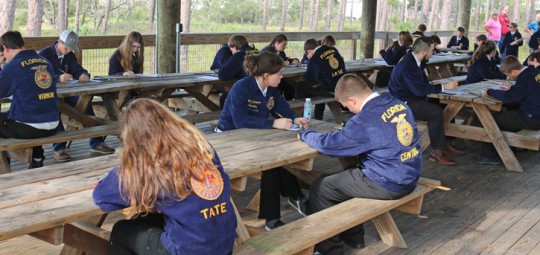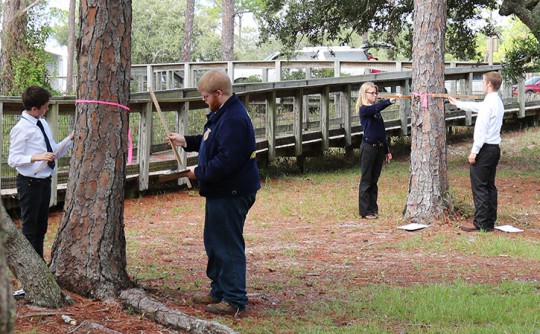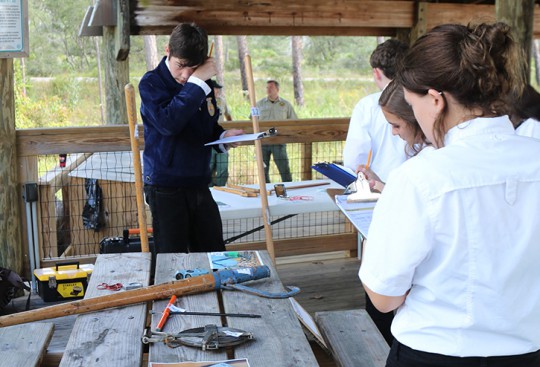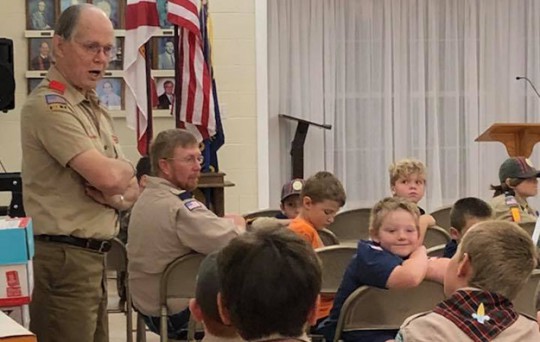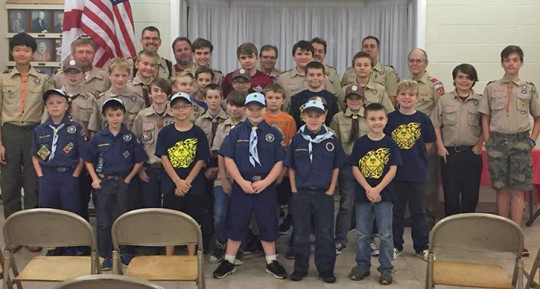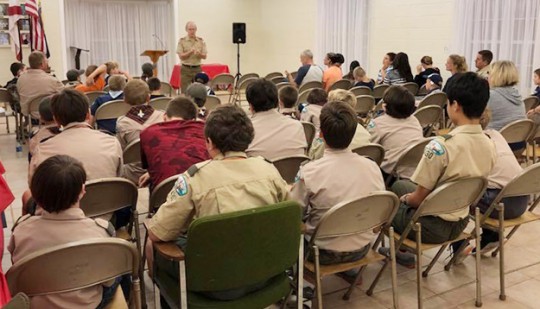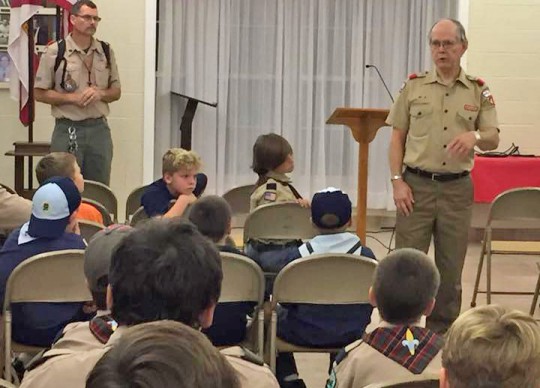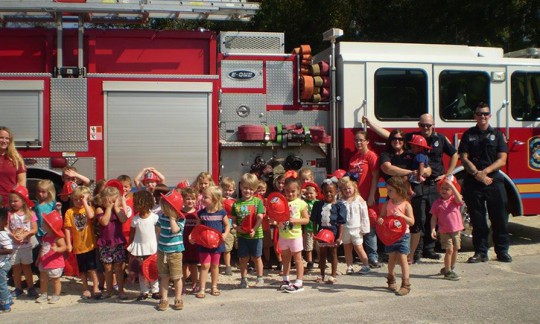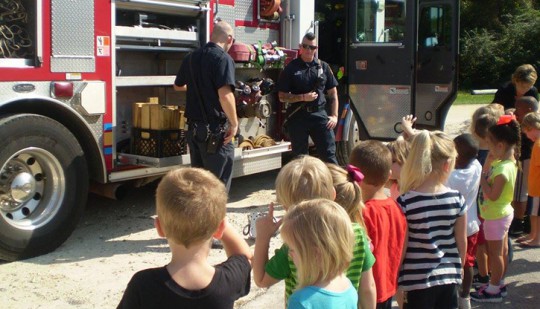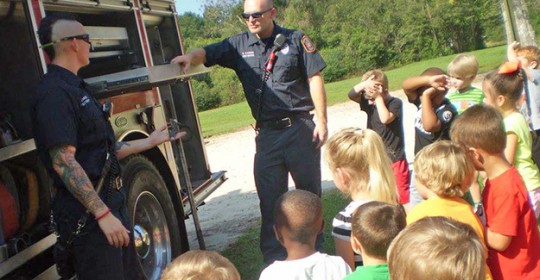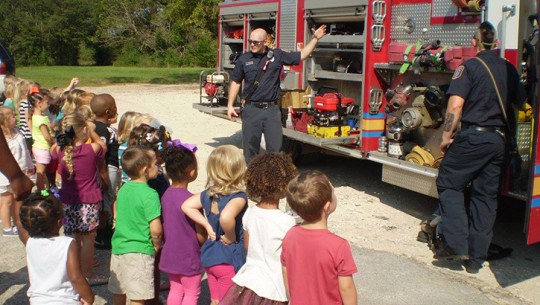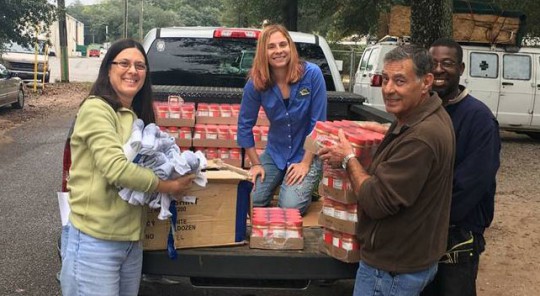Molino Park Elementary Holds Fall Carnival (With Photo Gallery)
October 21, 2017
The Molino Park PTA Fall Carnival was held Friday at the school.
The event featured a variety of carnival games, carnival food including popcorn and bake-off goodies, food vendors and a live auction.
For a photo gallery, click here.
NorthEscambia.com photos by Kristi Barbour, click to enlarge.
Photos: A Beautiful Early Morning At Lake Stone
October 20, 2017
Pictured is early Thursday morning at Lake Stone on West Highway 4, just outside Century.
Lake Stone Campground is a 100-acre campground and boat ramp facility . The campground has 77 campsites for everything from big RV rigs to tents. Recently updated to accommodate the more modern and much larger RV’s, Lake Stone is the county’s only facility located on a fresh water lake.
Lake Stone facilities include a boat ramp (gasoline engines are not allowedon Lake Stone), indoor public use building, a playground, showers, restrooms, fishing pier, security lights, electrical and water hookups, a sewage dump station, picnic areas and the beautiful lake.
Photos by Ditto Gorme for NorthEscambia.com, click to enlarge.
Fields Of Faith: Community Worship Service Held (With Gallery)
October 19, 2017
The Northview High School Fellowship of Christian Athletes (FCA) sponsored a student-led worship event “Fields of Faith” Wednesday night in the Tommy Weaver Memorial Stadium.
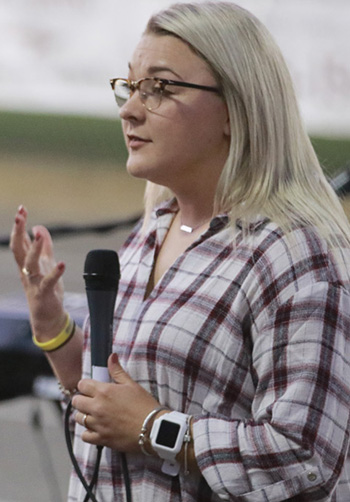 The service included music, a guest speaker and prayer.
The service included music, a guest speaker and prayer.
“The Lord is in full control. He can help you in any battle, in any trial, in any situation that comes your way,” said speaker Lauren McCall, coach of the Northview High School varsity cheerleaders. She encouraged those in attendance to be saved and dedicate their lives to Christ.
Over 200 faithful joined hands in prayer on the football field to end the annual service.
For a photo gallery, click here.
NorthEscambia.com photos, click to enlarge.
Escambia County Corrections Recognizes GED Graduates
October 19, 2017
The Escambia County Corrections Department and Jail Division proudly recognized two Jail GED Program graduates with a ceremony Wednesday, Oct. 18 at the Escambia County Jail, celebrating their dedication to achieving educational goals. This marked the first formal graduation ceremony hosted by Escambia County to recognize individuals housed at the jail who receive their GED diplomas.
Laxavier Lowery, 18, and April Wheelus, 30, earned their GED diplomas through the program while incarcerated, and both said they plan to continue on to higher education when they are released later this year.
At the ceremony, Escambia County Corrections Director Tammy Jarvis commended the graduates for their accomplishment and encouraged them to continue to work toward their goals.
“Use this opportunity as a launching pad,” Jarvis said. “Getting your GED – I don’t know that you know how many doors this has opened for you…this has opened so many more opportunities for you than what you had before you achieved this. Just the fact that you were willing to step out tells me that you’re looking for some sort of change. You’re looking to better yourself. You know that there are other things out there.”
Other ceremony attendees included Jail Commander Selina Barnes, Jail Maj. Greg Nash, Officer in Charge of Security Lt. Jason Walker, Program Coordinators Sean Parker and Donna Wilson, Instructors Rayshell Fairley and Charles Hall, along with graduates’ family members.
The Escambia County Corrections Department has offered a GED program for many years, becoming a certified testing center through the Florida Department of Education in 2014. In the 2016-17 fiscal year, two juveniles received high school diplomas and eight adults earned GED diplomas, with 324 students enrolled in the GED program and 179 tests administered.
After receiving his diploma Wednesday, Lowery expressed his plans to go to Pensacola State College for an associate degree before moving on to Florida Agricultural and Mechanical University to study communications. Lowery completed the GED program for his grandma, who he said was “rejoicing” when she heard the news.
“I never want to fail, so I continue to strive to do better,” Lowery said.
Lt. Jason Walker, who supervises the jail’s programs division including the GED program, said one of the objectives of the Escambia County Corrections Jail Division is to provide programs to incarcerated individuals to teach life skills in an effort to reduce recidivism.
“We want them to succeed so that society as a whole succeeds, and then hopefully next time we see them is in a better light,” Walker said. ”It’s a wonderful thing if we can help someone reach their goals.”
Wheelus said graduating from the GED program was especially significant for her since her mother encouraged her to complete it. Wheelus’ mother passed away Saturday, but learned of her daughter’s accomplishment before she died. Wheelus said she plans to attend Pensacola State College to study business and continue to better herself for her 9-year-old and 2-year-old sons.
“It means a lot,” Wheelus said of earning her diploma. “This is the best possible thing that could happen. It means a lot for me, my children, my family.”
Photos for NorthEscambia.com, click to enlarge.
Tate, Ransom Place In FFA Forestry Contest
October 19, 2017
Several local schools recently competed in the 2017 FFA Forestry Contest.
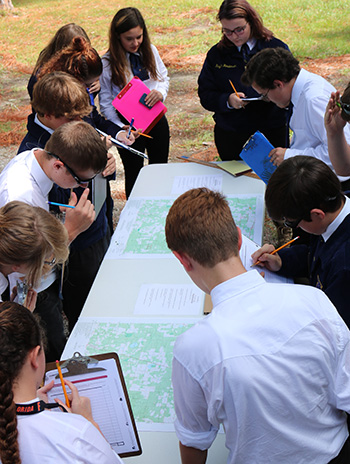 Teams competed in six areas — general knowledge; timber cruising to measure timber and determine merchantability; equipment identification to name tools and heavy equipment used in the forestry industry; tree identification naming different species of common trees in Florida; and forest disorders to identify diseases and bugs that infect trees in Florida.
Teams competed in six areas — general knowledge; timber cruising to measure timber and determine merchantability; equipment identification to name tools and heavy equipment used in the forestry industry; tree identification naming different species of common trees in Florida; and forest disorders to identify diseases and bugs that infect trees in Florida.
High School Overall Winners:
1st – Tate High Team A
2nd – Milton High Team B
3rd – Tate High Team B
Middle School Overall Winners
1st – Poplar Springs Middle (Graceville)
2nd – Ramsom Middle
3rd – Poplar Springs Middle (Graceville)
Photos by Jared Sigler for NorthEscambia.com, click to enlarge.
Molino Boy Scouts Learn About Government With ECUA Board Member
October 18, 2017
Boy and Cub Scout Troop 430 in Molino spent Tuesday evening with ECUA District 5 board member Larry Walker at Aldersgate United Methodist Church. Walker spoke about his role and about local government. Meeting and speaking to an elected official is part of Webelos advancement and the Boy Scout “Citizenship in the Community” merit badge. Photos for NorthEscambia.com, click to enlarge.
Century Fire Visits Camp Fire Learning Center
October 17, 2017
For National Fire Safety Week, crew members of Engine 519 of the Century Station of Escambia Fire Rescue visited and shared fire safety tips with the children of the Camp Fire Century Youth Learning Center. Courtesy photos for NorthEscambia.com, click to enlarge.
Taking A Bite Out Of Hunger: Peanut Butter Drive Underway
October 16, 2017
The UF/IFAS Extension Annual Peanut Butter Challenge is in full swing to help feed the hungry.
In an effort to boost the supply of the most requested food pantry item, peanut butter, UF IFAS Escambia County Extension is teaming up again with the Florida Peanut Producers Association to help “Take a Bite out of Hunger” by participating in a local peanut butter drive.
Residents are asked to help meet the challenge of collecting the versatile food by donating unopened jars of peanut butter at one of five locations now through November 22. All peanut butter collected will be donated to local food pantries in December.
Drop-off locations:
- Escambia County Administration, 221 Palafox Place, 4th Floor
- Escambia County Extension Office, 3740 Stefani Road
- Escambia County Farm Bureau,153 Highway 97, Molino
- Escambia County Public Safety, 6575 North W Street
- Gilmore Services, 31 East Fairfield Drive
Since 2012, the volunteers and UF/IFAS Extension faculty have collected jars of peanut butter from residents, volunteer groups and businesses in 16 Northwest Florida counties. Last year, UF/IFAS Extension county offices received 3,236 jars of peanut butter, said Libbie Johnson, agricultural agent for UF/IFAS Extension Escambia County and co-organizer of the challenge.
In addition to these donations, the Florida Peanut Producers Association also contributes, supplying more than 3,000 jars each challenge, Johnson said. They hope to surpass that total this year, and citizens of Escambia County are asked to help.
“The Peanut Butter Challenge not only raises awareness about the important contribution of North Florida’s peanut growers to the state peanut industry, but also helps provide a healthy, locally produced product to food-insecure families in northwest Florida,” Johnson said.
VFW Essay Contest Winners Named
October 16, 2017
Junior Zachary Prosser has been named Northview High School’s winner of the Atmore VFW Post 7016 Voice of Democracy essay contest.
Second and third place winners of the “American History: Our Hope for the Future” themed contest were sophomores Marissa Rothrock and Will Beach. Other students who made it into the Top Seven were Gracen Brook, Abigayil Mascaro, Nicholas Trump, and Kayla McKillion. Sophomore English teacher Vicki Baggett organizes the event for Northview, and selected teachers grade the essays. Prosser will now advance to the district level of competition against other high school students.
Pictured top: Zachary Prosser, Marissa Rothrock, teacher Vicki Baggett and Will Beach. Photo for NorthEscambia.com, click to enlarge.
Escambia County’s Tinker Named State 4-H Parliamentarian
October 16, 2017
Escambia County 4-H member Michelle Tinker was appointed the Florida 4-H state parliamentarian.
 Tinker has served in 4-H for many years at the local, district and state levels. She has complete projects in many areas, including swine, leadership, citizenship and public speaking. She currently serves as vice president of teh Escambia County 4-H Council, has served as the group’s president and was vice president of the District 1 4-H Council. She also served as the Florida 4-H State Council Reporter in 2016-2017.
Tinker has served in 4-H for many years at the local, district and state levels. She has complete projects in many areas, including swine, leadership, citizenship and public speaking. She currently serves as vice president of teh Escambia County 4-H Council, has served as the group’s president and was vice president of the District 1 4-H Council. She also served as the Florida 4-H State Council Reporter in 2016-2017.
Michelle has honed her skill at public speaking in years of 4-H. At this year’s 4-H University, she placed first, along with her sister Danielle Tinker, in the state plants and gardening team demonstration competition. Michelle was also selected to represent Florida 4-H at National 4-H Conference in Washington D.C. next April.
Michelle Tinker is the daughter of Bill and Angela Tinker.


